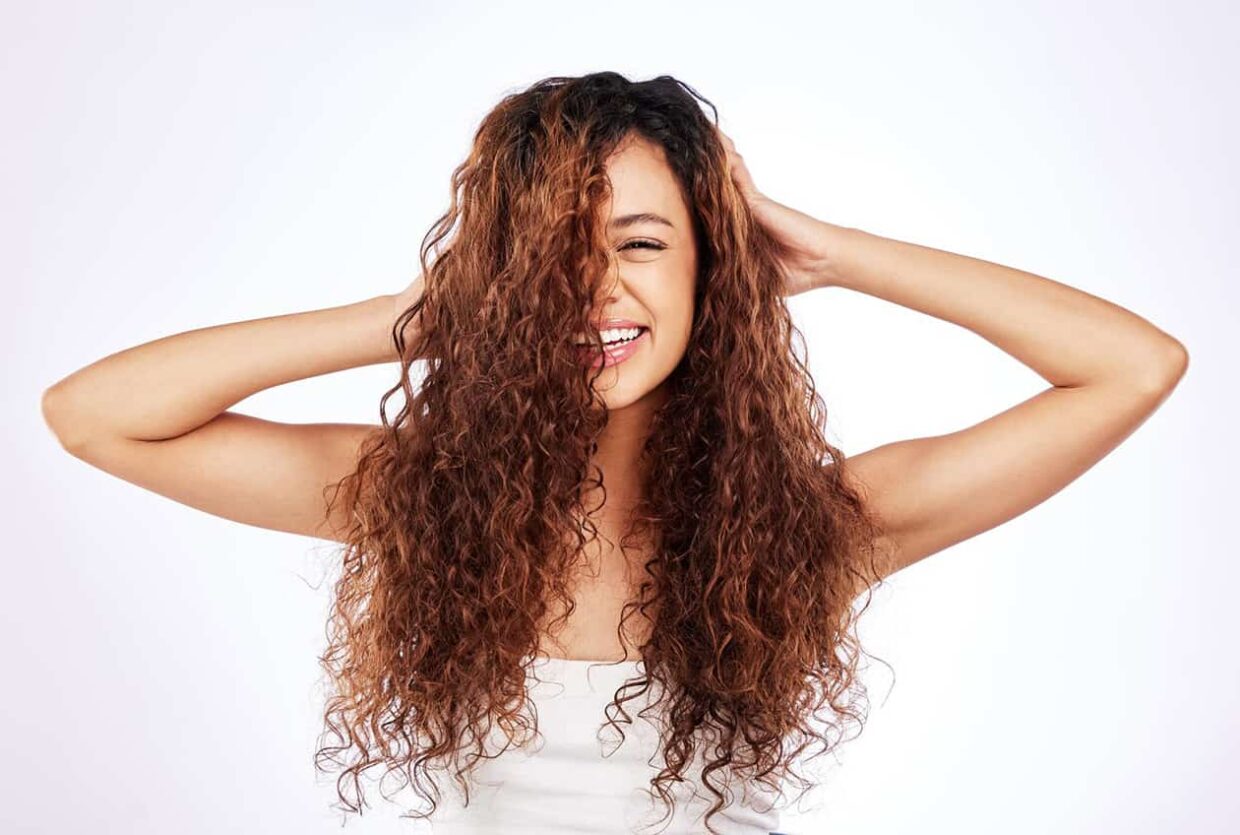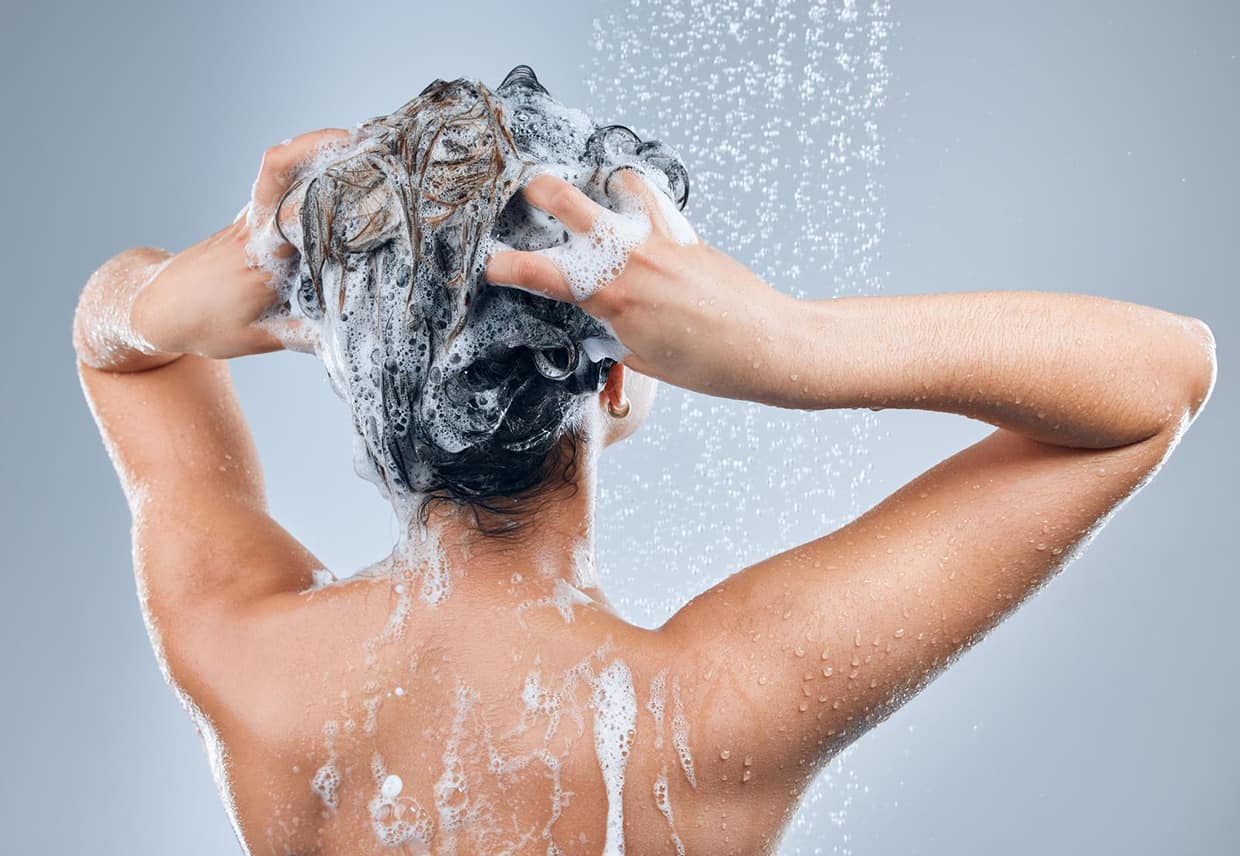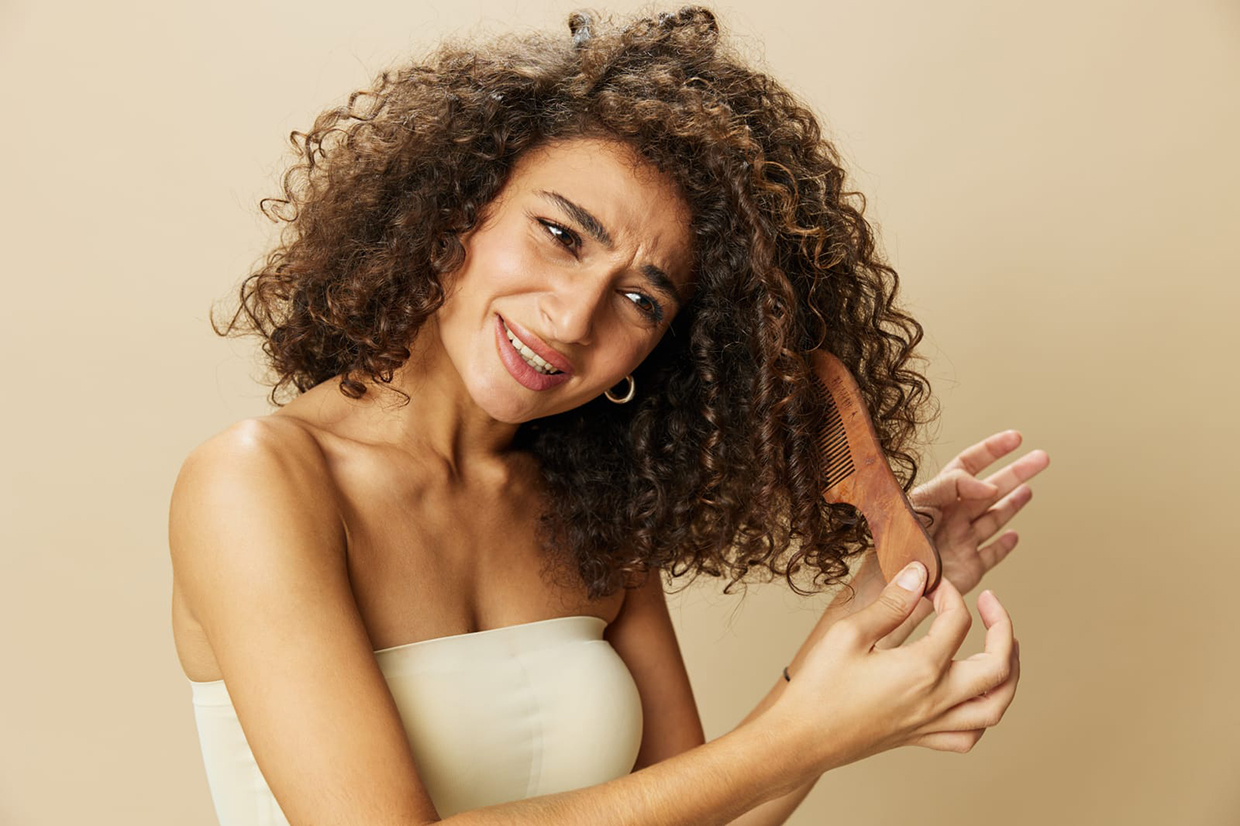Curly hair is so beautiful and challenging in its own way. If you are looking to embrace your natural curls, this guide will help you learn the basics of curly hair care for your best curls.

There are many different curl types, hair density, or coarseness that can affect how our curls are formed. The products used for each hair type are determined by personal preference, but the general care and techniques for washing curly hair are consistent for all curl types.
The interesting phenomenon with curly hair is that the more wear it curly and embrace the curly hair wash process, the better your curls look.
Curly Girl Method
Some curly girls follow a system called the Curly Girl Method. Started by Lorraine Massey who wrote “The Curly Girl Handbook”. This has become the go-to for curly hair guides to follow. These guides are typically adapted for each person and it isn’t necessary to follow this method exactly, but it can be a good starting point for beginners to get curly hair care knowledge. The main takeaway from the Curly Girl Method is to avoid ingredients that are harsh on your hair.
Ingredients to avoid
Typically, the main ingredients to avoid for curly hair products are silicone, sulfate and parabens. Fortunately, most products marketed for curly hair will be labeled as sulfate, paraben and silicone free on the front, making it easier to find a curly girl-approved product.

Washing curly hair
The wash day process can seem lengthy, so turn on a podcast and make it feel like a spa day.
Curly hair is typically drier than straight hair, so keeping frizz under control and adding moisture is the main goal in this process. For that reason, it is recommended to wash your hair less often. As a general rule of thumb, the curlier the hair, the less often it needs to be washed. If curls need to be refreshed they can be rinsed while in the shower without washing the hair strands.
When applying shampoo, focus only on the scalp. Take your time to massage the shampoo into the scalp with your fingertips to stimulate blood flow. For thicker hair, you may need to section the hair to get into the scalp. Always be gentle while pulling apart curls.
“Three years ago, I discovered I had curly hair. It was always wavy and damaged. I started down the ‘curly girl’ path to see if I could get my hair to be more healthy. I found out that my hair is not like anyone else’s hair, and no one has hair like anyone else really. So I had to start experimenting with products and methods. And over three years later, I finally love my curly-wavy hair!”
—Laura Sampson, Little House Big Alaska
Best shampoo for curly hair
For curly hair, a mild clarifying shampoo or co-wash is recommended. These products are typically not very sudsy and look more like a conditioner, which may seem unusual at first. Cleaning is happening but it isn’t stripping as much moisture from your hair.
Conditioning curly hair
If hair is not being washed, it will still need to be conditioned. The added moisture from the conditioner helps to tame the frizz and define the curls. Like the shampooing process, working in sections helps with even distribution. Conditioner is applied to the ends of the hair only, avoiding the scalp.
While the conditioner sits in the hair, use a wide-tooth comb to detangle the hair. There may be hair coming out while brushing, and this is totally normal. Let the conditioner sit in the hair for a few minutes before rinsing it out.

Combing curly hair
When detangling curls, start with a wide-tooth comb. When it can comb through the hair easily, move to a smaller comb or brush.
When unpicking curls, use a wide-tooth comb. A good rule of thumb is to start with the widest tooth and work your way to a smaller-tooth comb or brush for any stubborn tangles.
While brushing, be sure to brush the scalp. With less washing, this step is important for a healthy scalp and hair. Plus, it feels so good.
Once the hair is detangled and rinsed, leave those curls alone. Apply product and gently handle them while drying, but don’t brush through them again.
Drying curly hair
Once your curly hair is clean, use a jersey-knit material for a towel — an old t-shirt works great. Terry cloth towels are rough on curls and create more frizz. Keep the hair wrapped until you are ready to apply the product. This is the perfect time to fit in some self-care.
“The key to curly hair that doesn’t frizz is drying it properly. A friend once showed me how to ‘plop’ or scrunch soaking wet hair with a t-shirt, essentially letting the water be soaked out rather than towel dried. For me, it has made all the difference in bouncy curls that don’t frizz. I rarely blow dry my hair anymore, but I always use a diffuser when I do.”
— Susannah Brinkley Henry, Feast + West
Curly hair product
There are many curly hair products to choose from, and the best option will be different depending on your hair and style preferences. Apply the product while the hair is still wet, scrunching it into the ends and working your way up. To soften curls, try the scrunch and crunch technique. It works exactly as the name states, by using a wet jersey towel to scrunch out the crunch from your curls. Let the curls air dry to avoid any harsh heat.
To refresh curls on a non-wash day, use a moisturizing spray or leave-in conditioner to wet the curls and refreshen them.
Final thoughts
The whole goal of caring for naturally curly hair is to get healthier, more defined curls. This process will take time, so be patient while waiting to see your results. Wait at least four to six weeks after starting the process and before making any adjustments, and then test methods of applying products to see what you like best for your curls.